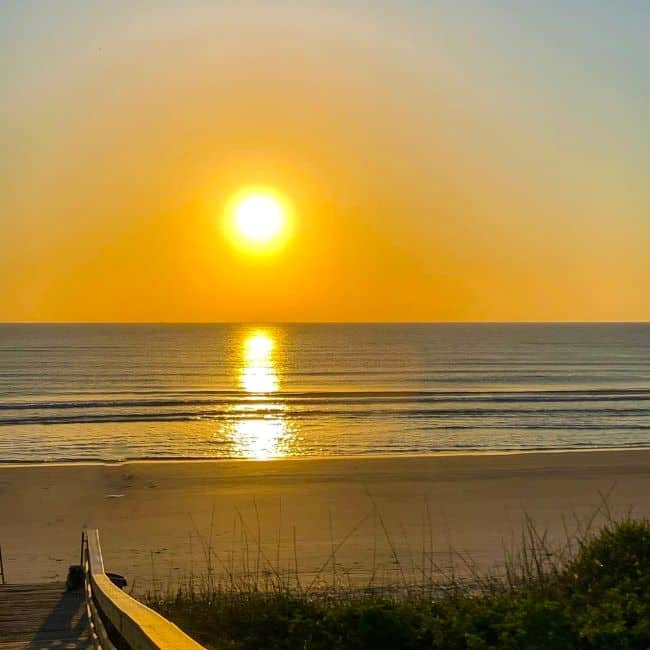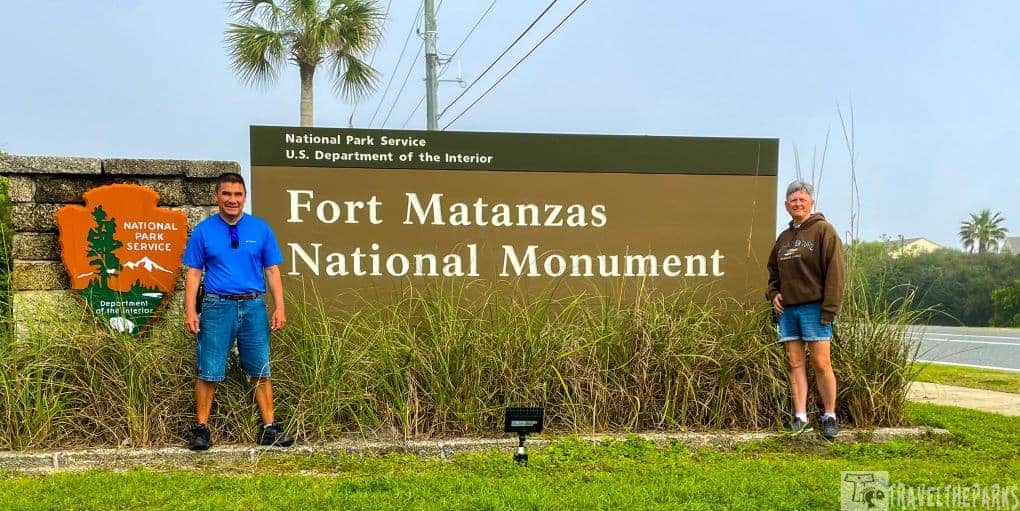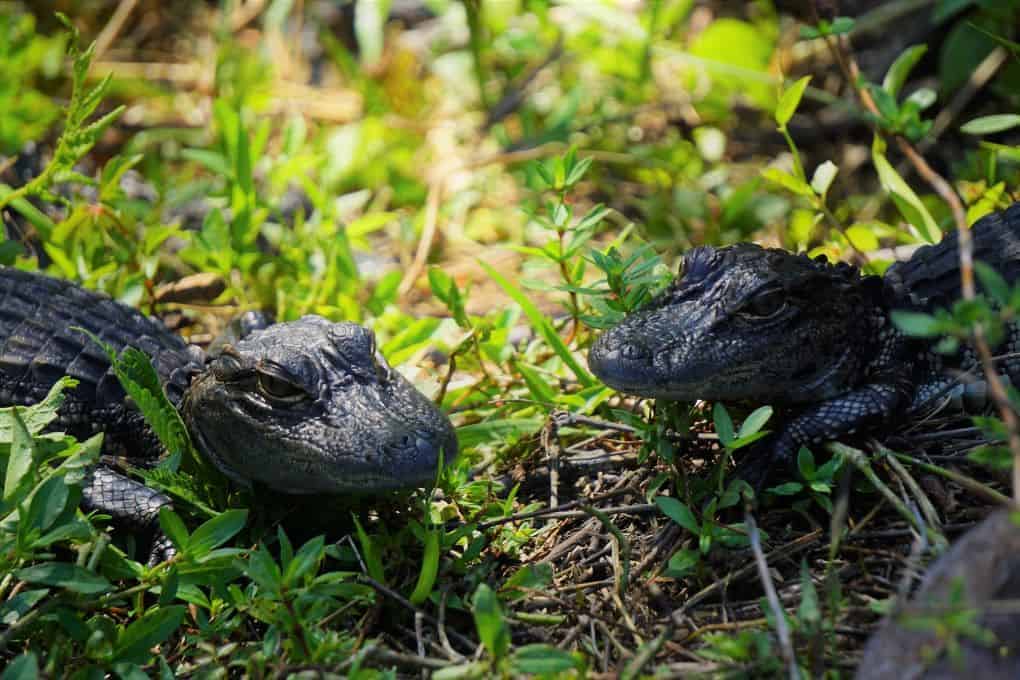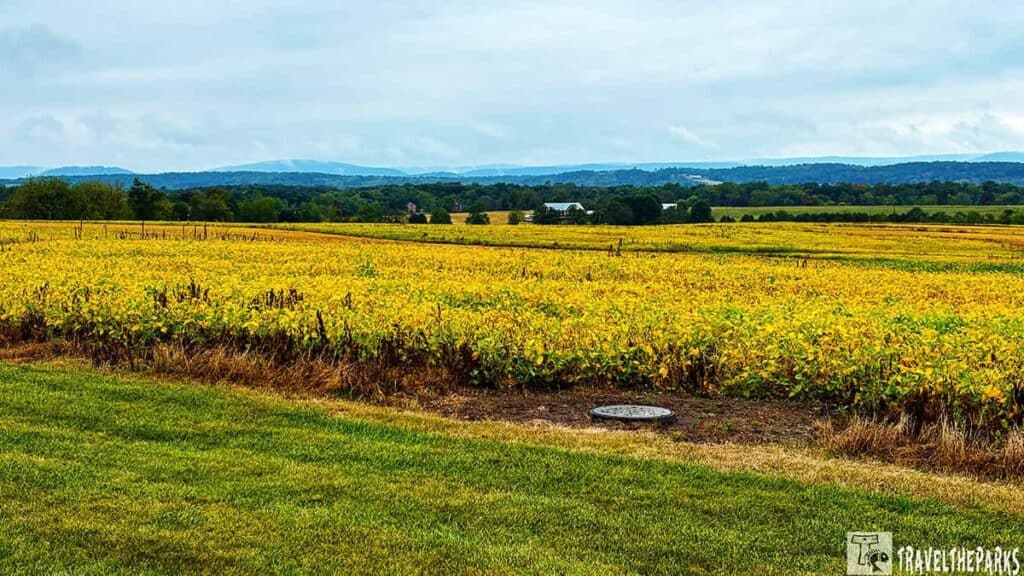There is a thought-provoking history behind Fort Matanzas National Monument. Are you curious to learn the tale? We have been here twice but never been able to reach the fort because of the impact of hurricanes or inclement weather. Finally, on this visit to St Augustine, we were excited to learn more about the violent story of this interesting Fort Matanzas National Monument landmark.
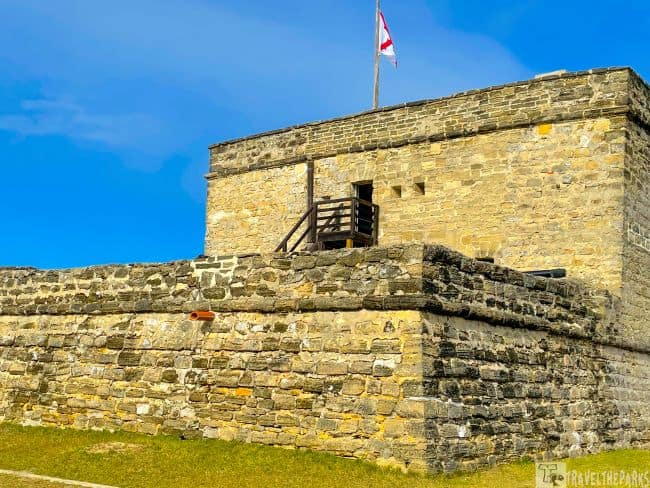
Unlike the fortresses built in St Augustine and Amelia Island, they built this watchtower to defend any attempt by enemies like the British to sneak up the southern river waterway to attack St. Augustine. Completed in 1742, ships with any intention of entering the inlet were within shot of the fort’s guns. Since the 1700s, tidal erosion and shifting sand deposits have altered the inlet so much that it now lies about 0.5-miles from the open ocean.

This post may contain affiliate links, meaning if you purchase something through one of these links, we may earn a small commission at no extra cost to you! Read the full disclosure policy here.
Table of Contents
Where is Fort Matanzas National Monument?
From Orlando, take I-4 north to I-95 north to exit 289. Exit right and follow Palm Coast Pkwy (a toll road) until you reach Hwy A1A. Turn left and follow A1A north. Passing Washington Oaks State Gardens it is an additional 5-mile. The park is on your left.
From St. Augustine (Historical District): Follow Highway A1A south for approximately 15-miles south to the park entrance on the right side of the road.
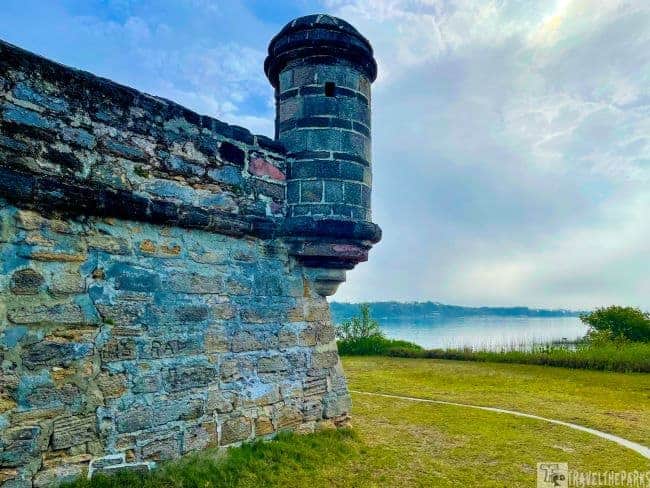
History of Fort Matanzas National Monument
They designated Fort Matanzas National Monument a United States National Monument on October 15, 1924. The monument comprises a 1740 Spanish Citadel called Fort Matanzas. Matanzas Inlet is at the mouth of the Matanzas River on the northern Atlantic coast of Florida. It spans approximately 298 acres of salt marsh surrounded by two barrier islands. Unlike the iconic Castillo de San Marcos, this small-fortified watchtower has a much smaller footprint at 50 feet wide and 30 feet high.
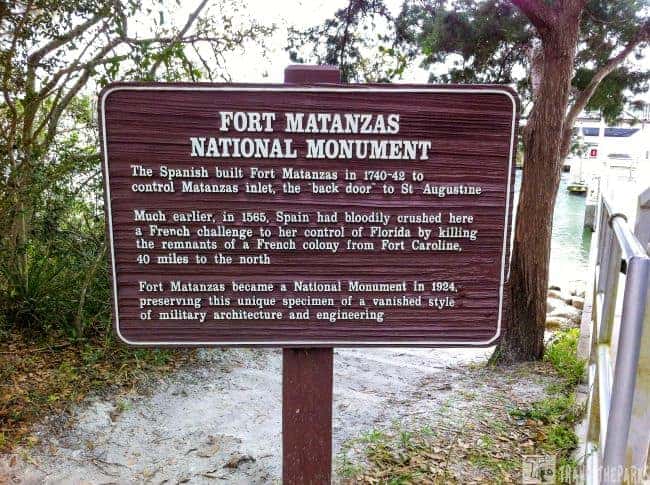
The Bloody Origins: How Fort Matanzas Got Its Name
A fascinating tale almost 200 years prior to the fort in 1565, the Spanish General Pedro Menéndez de Avilés and his troops ruthlessly slaughtered Jean Ribault’s Huguenots at the southern end of Anastasia Island. Legend has it that the bloody massacre turned the marshes red.
The most renown incident began when the Frenchman Jean Ribault and his crew of Huguenots left Fort Caroline in an attempt to attack and eliminate the Spaniards at St Augustine. However, a hurricane took his vessels far to the south, causing them to sink along the coast of Florida between modern-day Daytona Beach and Cape Canaveral. At this same moment in time, General Pedro Menéndez was moving north with 70 soldiers to capture Fort Caroline. After burning the fort to the ground, they heard from the local Timucuan Indians that a group of 300 French survivors were camped on the beach near Matanzas Inlet.

The Final Battle: Defending the Gateway to St. Augustine
The shipwrecked castaways had walked north to Matanzas Inlet. They were quickly met by General Pedro Menéndez and his men. The brutal battle ended with 245 French put to death. The only survivors were those who professed they were Catholic. From this time forward, the inlet was called Matanzas — meaning “slaughters” in Spanish.
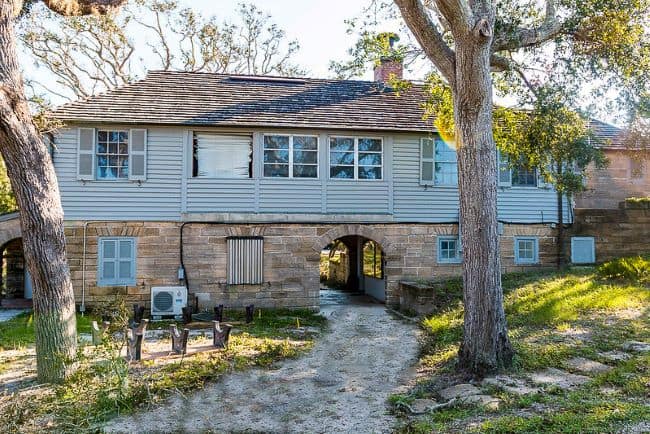
Start Your Journey at the Fort Matanzas Visitor Center
In 1936 they constructed the Visitor’s Center. Built of coquina brick, the setting is perfect with old, majestic oak trees surrounding it. The 1st level of the building houses the Visitor Center and a small gift store. The upper level houses offices and is of wood frame construction. Parking at the park is limited and fills quickly.

The outdoor areas of the Fort Matanzas Visitor Center are open from 9:00 a.m. to 5:30 p.m. daily except for Thanksgiving and Christmas Day. Picnic areas, nature trails, and fishing opportunities are all included. Visitors can also pick up basic visitor information. Public restrooms are available. There is a small theater next to the visitor center which can seat about 12 people. We enjoyed watching the 8-minute film on the history and restoration of the watchtower. Be sure to ask for your park cancellation stamps before leaving the park. Remember to bring your National Park Passport book.
PRO Tip: It is best to get there early in order to secure your preferred ferry ticket. Boat trips depart every hour at half past; first trip departs at 9:30 am, the final trip of the day departs at 4:30 pm. All trips depart, weather permitting.
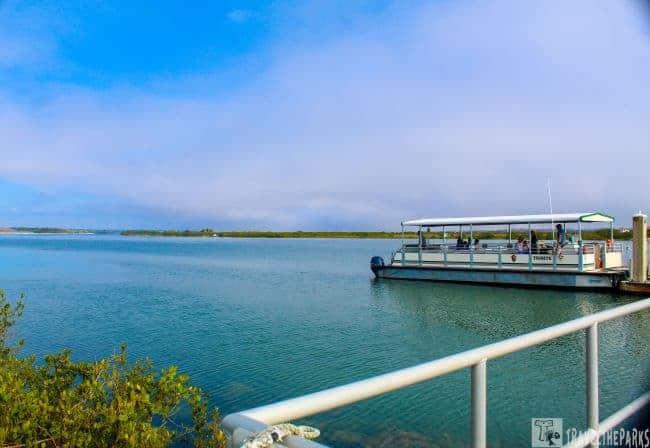
Don’t Miss the Boat: Scenic Ferry Ride to Rattlesnake Island
The fort on Rattlesnake Island is only accessible by ferry boat. Tickets are free on a first come first serve basis and include the National Park service ranger guided tour. The small shuttle pontoon can carry about 35 passengers.
Today Ranger Steve joined us. The safety briefing begins just through the visitor center arch. We then proceeded to the dock, boarding the covered pontoon ferry boat Trinite. The ferry ride to the fort lasted less than 5 minutes. This morning, we saw dolphins were feeding on bait pods following the rising tide, providing us excellent photo opportunities.
PRO Tip: Be advised that there are no services on Rattlesnake Island. Use the restroom before boarding the ferry.
After disembarking the ferry, Ranger Steve provided a 10 minute presentation on the history and construction of the fort. Following his narrative, we had approximately 25 minutes to tour the fort and the grounds.
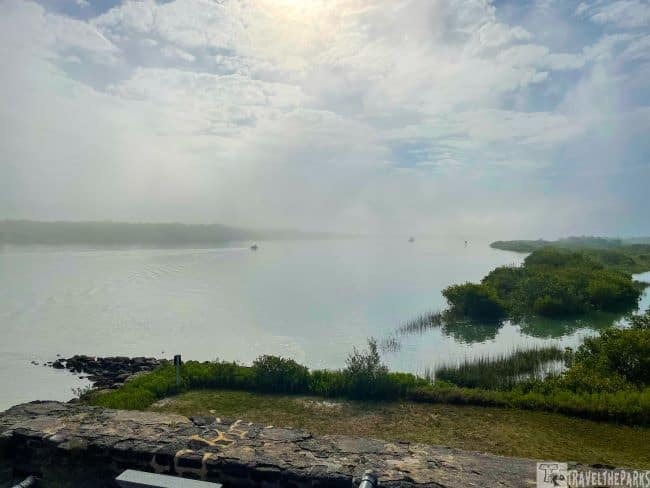
Building Fort Matanzas: A Defensive Stronghold Takes Shape
Ranger Steve told us how Antonio de Arredondo of Havana and Pedro Ruiz de Olano of St Augustine designed Fort Matanzas. Built by soldiers, artisans, and convicts, they quarried the coquina stone near El Piñon, a small inlet south of Matanzas. They set the coquina blocks on a foundation of pine pilings that were driven into the soft marshy soil. You can still see the pilings. They seem to have survived the test of time.
We learned that when finished, originally Fort Matanzas had walls plastered in white and the sentry tower was painted red. Isolated bricks still show the white plaster. The original Sentry Tower fell off the fort sometime between 1821-1880. Initially, constructed of stacked stone, they made the 1924 replacement using poured concrete.
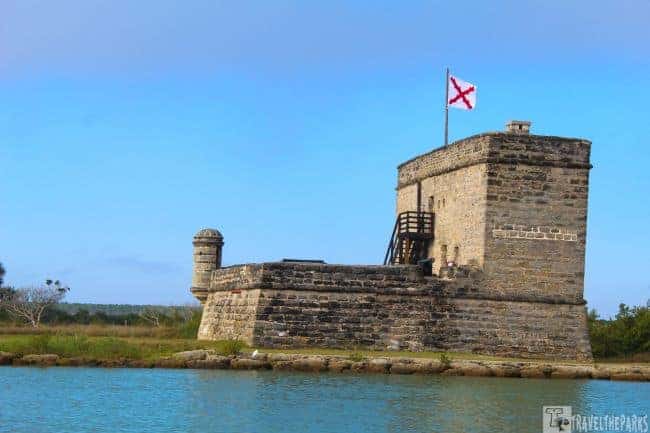
What Is Coquina? Discover the Rock That Built Fort Matanzas
Of the many things that make the watchtower unique, the most visible is the coquina. Coquina is the foundation of this historic watchtower. The natural stone contains millions of fossilized seashell fragments that, over many years, have become stuck together. The fossils are trilobites, brachiopods or other invertebrate debris. This sedimentary material incorporates calcium carbonate. When Fort Matanzas and Castillo de San Marcos were being built, they made the mortar used to attach each block of coquina from a mixture of lime, sand, & water. To make the lime, they would burn oyster shells in a pit and collect the ashes. The different ingredients of coquina come together to make a remarkably strong stone.
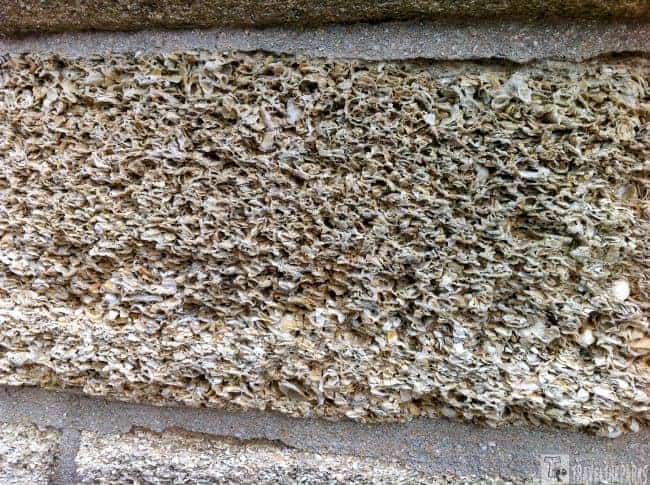
Explore the Fort: What to Expect on a Guided Walking Tour
Ranger Steve stated that for 30 days, they would station six to eight Spanish enlisted soldiers and one junior officer at Fort Matanzas. The officer’s duties included patrolling the coast, standing watch, and engaging in artillery drills. All the enlisted men shared one large, hay-stuffed platform bed. The last soldier to be stationed at Fort Matanzas left in 1821. A thought immediately occurred. Just imagine what it was like to be a soldier protecting the back entrance to St. Augustine. The summer heat and mosquitos must have been unbearable.
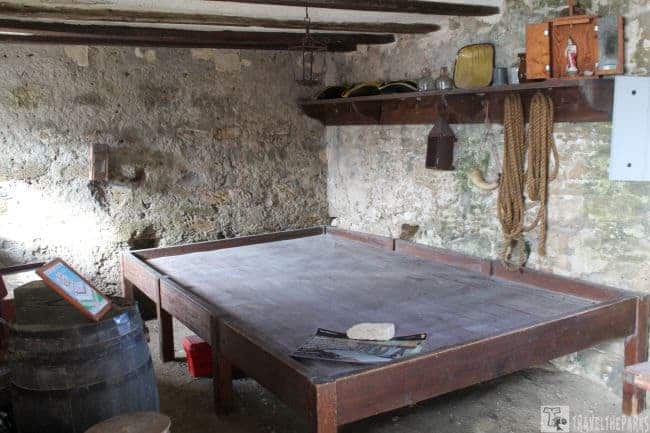
The Gun Deck: A Key Feature of the Interesting Fort Matanzas National Monument
We began our tour scrambling up the wooden ladder, no easy feat to the first level terreplein. The gun deck (terreplein) included two cannons and the soldiers’ quarters. No freshwater was available at the fort. Instead, they constructed a large water cistern. It is located under the Fort’s gun-deck. A wooden spout collected water runoff from the observation deck.
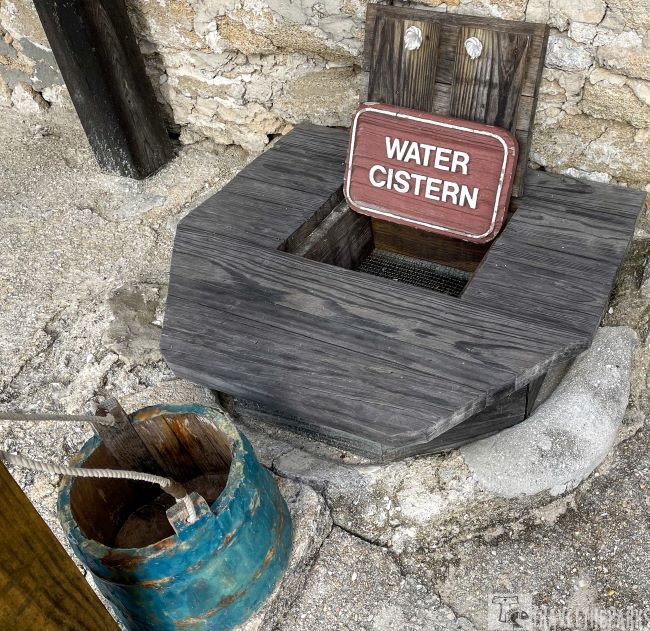
The outside gun deck originally housed 5 cannons during its occupation. Four 6-pound cannons (circa 1750) and one 18-pound cannon. Today, the remaining two cannons are replicas. They left the original cannons behind when the Spanish abandoned the fort in 1821. National Park personnel fire the replica cannons only on special weekends (see the park website for details). These cannons could reach the 0.5-miles to the inlet when the fort when it was first constructed. You will also notice on this level the small loopholes built into the walls for musket firing.

Enlisted Men’s Quarters: A Look at Soldier Life
The enlisted men’s quarters included a large platform bed that was shared, a long table with chairs for eating, and a stone fireplace for warmth during the cooler months. Back outside, a small flight of stairs off the gun deck is the officer’s quarters. The officer had a private room. The sparse furnishings included a single straw mattress, a writing desk and food storage. From the second floor officer’s room of the fort, you can access the powder magazine. To access the barrels of gunpowder once stored inside, the soldiers had to climb down a ladder and through a small opening.
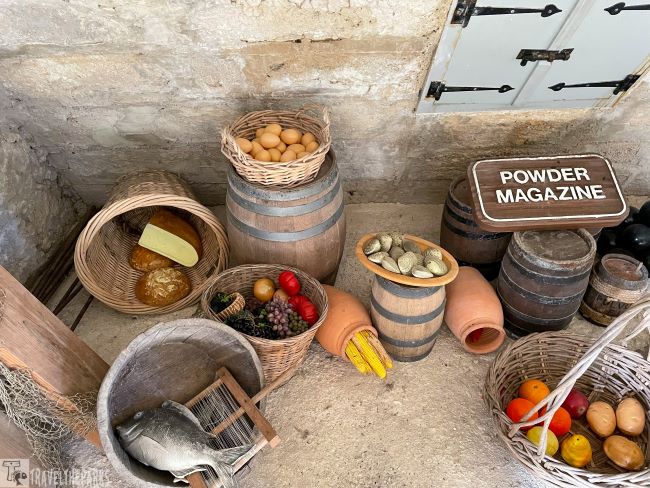
Fort Matanzas flies a Spanish flag, a symbol of Spanish control of Florida during colonial times. The Cross of Burgundy is often called St. Andrew’s cross because legend says that Andrew the Disciple was crucified on a cross that looked like it.
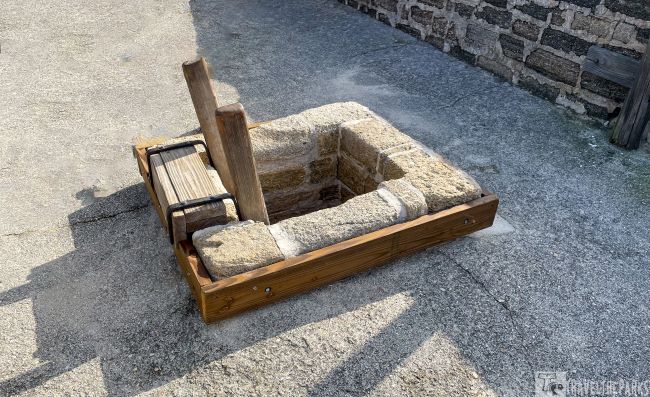
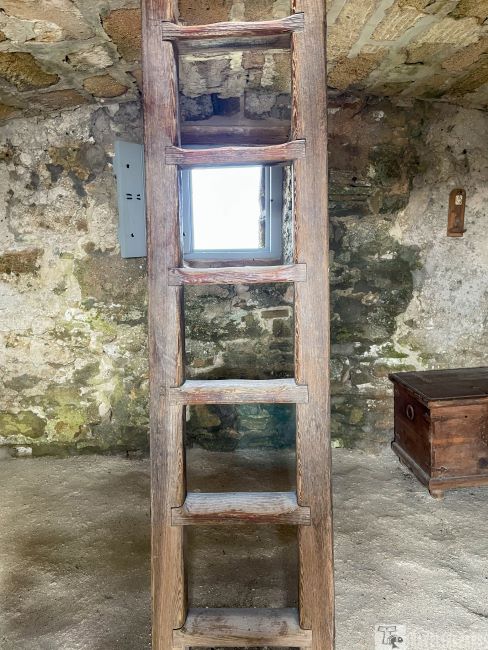
Upper Observation Deck
A small vertical ladder in the center of the officer’s quarters allows you to gain access to the observation deck above. I would suggest leaving your backpack on the lower level and be sure to bring binoculars. A narrow roof access hole is in the middle of the stone observation deck. It is a very tight squeeze, but the views from the top of Rattlesnake Island and the Matanzas River are breathtaking! We only spent a few minutes taking pictures and walking the parapet. The ladder is almost vertical and only allows one at a time, so best not to linger.
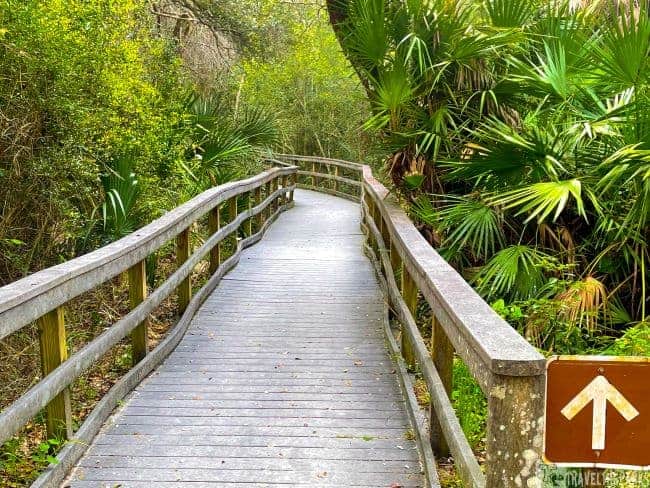
A Scenic Adventure: Coastal Hammock Nature Trail
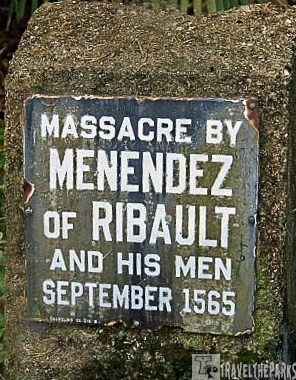
Make sure you allow enough time to explore and hike the walking trails. Bring snacks and water. The coastal hammock nature trail is a short 0.5-mile loop. A free trail guide is available at the beginning of the trail. It traverses through a mostly Maritime Forest and there are trail identifiers throughout the walk. The oak and cedar trees provide a great deal of shade. Today is a little foggy, lots of wildlife and birds along this trail.
A commemorative marker sits just off our Coastal Hammock nature trail. Although the exact spot of the violent story cannot be identified, it is thought that the incident occurred close to this trail.
If you have access to a kayak, the river is an amazing paddle. Visitors can launch at Helen Mellon Schmitt Park on Rattlesnake Island or via the boardwalks on the beachside of Fort Matanzas National Monument. The river can be swift during high tide, check tidal charts prior to launching. Kayak tours are available through Ripple Effect Eco Tours or Geotrippin Adventure Company. The latter also rents kayaks & canoes for a reasonable price.
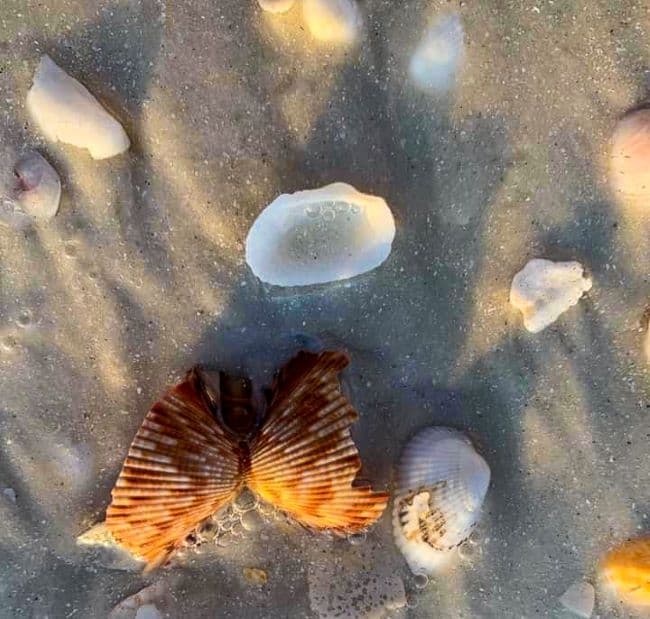
Exploring the Beachside of the Island
Do not miss the adjacent beach areas to the Fort. Two beaches, the Atlantic ocean or the Matanzas River Inlet side. You can park on the Atlantic side; access to the beach is along an elevated wooden walkway. The inlet side has a short walk to the river’s edge. A beautiful location with sugary soft white sands. An ideal spot for an afternoon picnic; there are places where families can swim and experience the waves, or exploring the sandbars for that perfect seashell exposed by the shifting tides. There’s always something new to discover. The picturesque inlet is fantastic for bird watching or casting for that prized catch. It is important to note the beach is the nesting site for endangered sea turtles, including the loggerhead, green and leatherback.
What should we bring? Remember, a good pair of sunglasses, sunscreen, towel, ball cap or wide-brimmed hat, and a light loose-fitting long-sleeved shirt for sun protection while on the beach. If you plan to walk the trails, bring bug spray for the biting insects.
PRO Tip: However you choose to enjoy the local parks, always remember to recreate responsibly during your visit. And never forget: Take only pictures, and only leave footprints.

Fort Matanzas National Monument-Interesting Facts
- They named the ferry after Jean Ribault’s flagship. She was a 150 ton galleass. Her armament was a bronze cannon. She led a fleet of 7 ships, sailors, soldiers and families to resupply the French settlement of Fort Caroline in 1565. Her cargo included 32 cannons and various military supplied for New France.
- Many migratory bird species frequent Matanzas beach in the winter months. Avid birdwatchers can access a guide by clicking this link.
- Archeologists have found traces of hunter-gathers who arrived 12,000 years ago, long before Europeans arrived. We don’t know what these people called themselves; they are the earliest inhabitants (Paleo-indians)
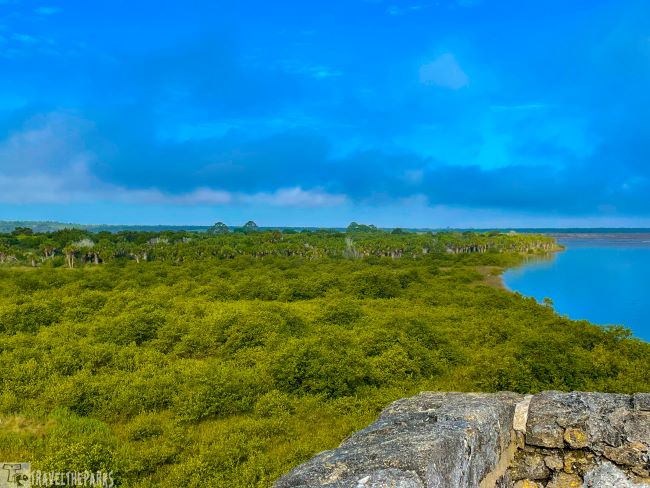
Final Thoughts: An Unexpected Story from the Interesting Fort Matanzas National Monument
Fort Matanzas has successfully stood watch over the southern entrance to St. Augustine for 272 years. Off the beaten track, this watchtower is a treasured piece of American history, a truly unique national park experience. This Little-known Fort Matanzas National Monument is truly a hidden gem.
If you have questions about visiting Fort Matanzas National Monument, feel free to leave us a comment or check us out on Facebook, twitter or Instagram.
